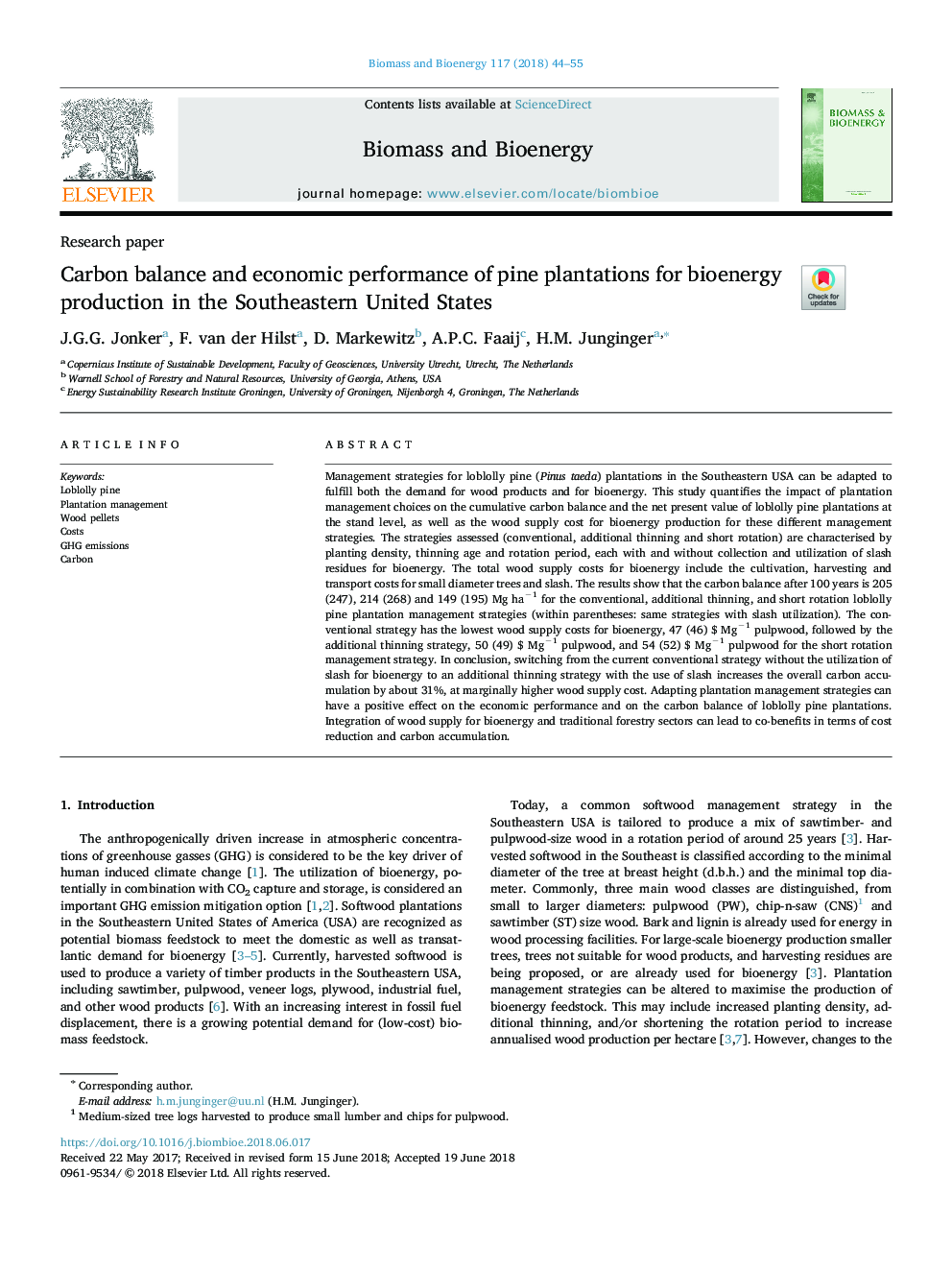| کد مقاله | کد نشریه | سال انتشار | مقاله انگلیسی | نسخه تمام متن |
|---|---|---|---|---|
| 7062794 | 1459776 | 2018 | 12 صفحه PDF | دانلود رایگان |
عنوان انگلیسی مقاله ISI
Carbon balance and economic performance of pine plantations for bioenergy production in the Southeastern United States
ترجمه فارسی عنوان
تعادل کربن و عملکرد اقتصادی کاشته های کاج برای تولید انرژی بیولوژیکی در جنوب شرقی ایالات متحده
دانلود مقاله + سفارش ترجمه
دانلود مقاله ISI انگلیسی
رایگان برای ایرانیان
کلمات کلیدی
موضوعات مرتبط
مهندسی و علوم پایه
مهندسی شیمی
تکنولوژی و شیمی فرآیندی
چکیده انگلیسی
Management strategies for loblolly pine (Pinus taeda) plantations in the Southeastern USA can be adapted to fulfill both the demand for wood products and for bioenergy. This study quantifies the impact of plantation management choices on the cumulative carbon balance and the net present value of loblolly pine plantations at the stand level, as well as the wood supply cost for bioenergy production for these different management strategies. The strategies assessed (conventional, additional thinning and short rotation) are characterised by planting density, thinning age and rotation period, each with and without collection and utilization of slash residues for bioenergy. The total wood supply costs for bioenergy include the cultivation, harvesting and transport costs for small diameter trees and slash. The results show that the carbon balance after 100 years is 205 (247), 214 (268) and 149 (195) Mg haâ1 for the conventional, additional thinning, and short rotation loblolly pine plantation management strategies (within parentheses: same strategies with slash utilization). The conventional strategy has the lowest wood supply costs for bioenergy, 47 (46) $ Mgâ1 pulpwood, followed by the additional thinning strategy, 50 (49) $ Mgâ1 pulpwood, and 54 (52) $ Mgâ1 pulpwood for the short rotation management strategy. In conclusion, switching from the current conventional strategy without the utilization of slash for bioenergy to an additional thinning strategy with the use of slash increases the overall carbon accumulation by about 31%, at marginally higher wood supply cost. Adapting plantation management strategies can have a positive effect on the economic performance and on the carbon balance of loblolly pine plantations. Integration of wood supply for bioenergy and traditional forestry sectors can lead to co-benefits in terms of cost reduction and carbon accumulation.
ناشر
Database: Elsevier - ScienceDirect (ساینس دایرکت)
Journal: Biomass and Bioenergy - Volume 117, October 2018, Pages 44-55
Journal: Biomass and Bioenergy - Volume 117, October 2018, Pages 44-55
نویسندگان
J.G.G. Jonker, F. van der Hilst, D. Markewitz, A.P.C. Faaij, H.M. Junginger,
